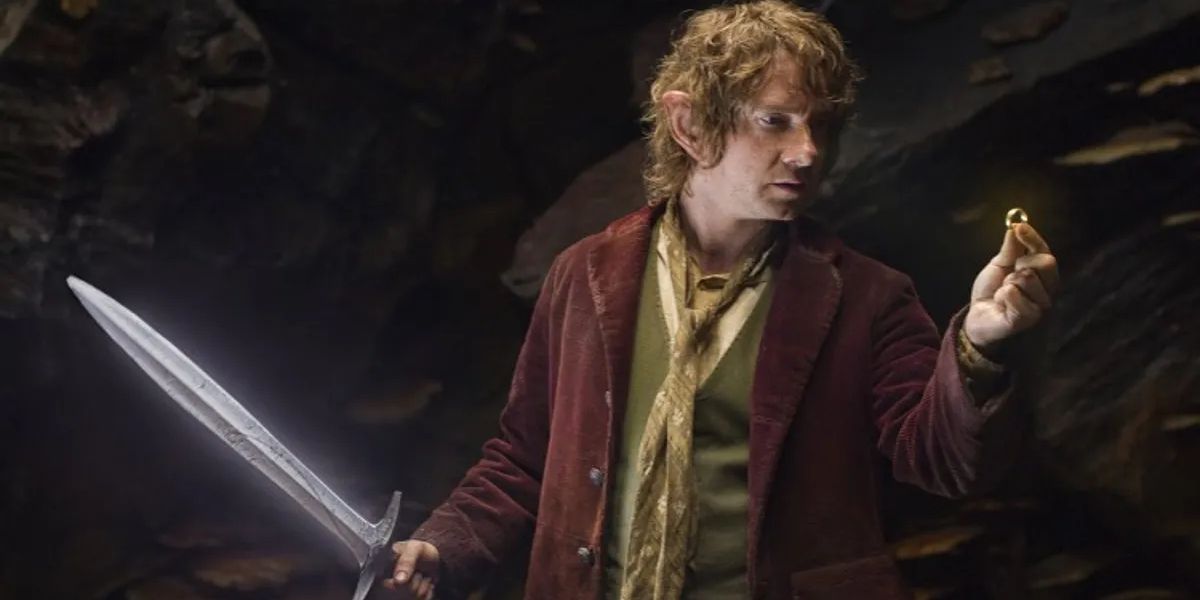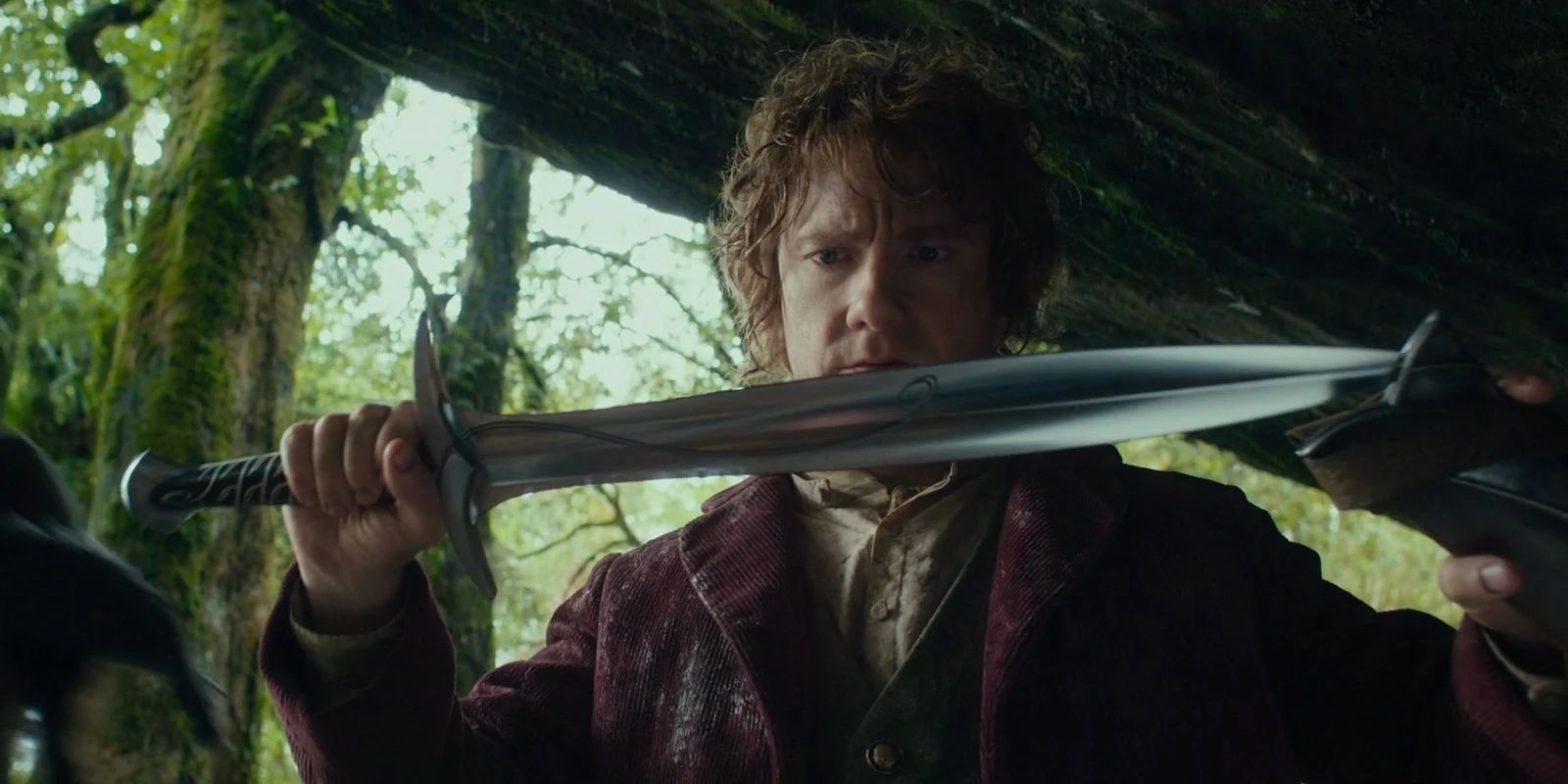
The Enigmatic Sword of Bilbo Baggins: Unraveling its Mysteries

Discover the captivating tale of Sting, Bilbo's sword, which held a rich history long before it aided him and Frodo in their perilous adventures Unearth the origins and find out where Bilbo stumbled upon this extraordinary weapon
Highlights
Sting, initially viewed as a simple dagger, played a significant role in both The Hobbit and The Lord of the Rings, glowing blue when orcs were nearby.
Bilbo discovered Sting, along with other Elven blades, in a troll's cave. Later on, he realized its remarkable effectiveness against spiders and Gollum, and thus claimed it as his own.
The origin of Sting is intertwined with the swords Glamdring and Orcrist. All three weapons were skillfully crafted by Elven smiths and possessed enchanting qualities.
Often underestimated as a formidable artifact, the seemingly ordinary Sting, adorned with a simple leather sheath, was frequently dismissed as a mere dagger for the Elves or a pocket knife for the Trolls. However, this seemingly unimpressive weapon proved to be a fitting armament for a Hobbit. The description of Sting in The Hobbit is not explicitly detailed, but in the film adaptations, it is portrayed as a blade reminiscent of a leaf, embellished with a captivating spiral design and elegant curved edges. In The Lord of the Rings, the cross guard of Sting bears engraved Sindarin letters that translate to: "Sting is my name; I am the vanquisher of spiders."
Despite its unassuming origins, Sting ultimately played a vital role in both The Hobbit and The Lord of the Rings. However, its significance and presence in the history of Middle-earth predates these renowned tales.
Where Did Bilbo Find Sting?
During the Quest of Erebor in TA 2941, Bilbo stumbled upon Sting at the same time he encountered the Trolls Bert, Tom, and William in eastern Eriador. Gandalf rescued the group from the Trolls, resulting in William dropping the key to their cave. Bilbo managed to retrieve it and together with Gandalf and the Dwarves, they claimed the entire treasure, including several Elven blades. Among these blades were two remarkable swords, Glamdring (Beater) taken by Gandalf and Orcrist (Goblin-cleaver or Biter) claimed by Thorin II Oakenshield. Bilbo, on the other hand, chose the seemingly unremarkable Sting.
Similar to Glamdring and Orcrist, Sting emitted a chilling glow whenever Orcs were nearby, allowing its owner to detect their presence. However, unlike the other swords, Sting had a distinctive blue glow at its edges, shimmering like a flame. Over time, the Orcs developed an innate fear of such weapons. Bilbo and later Frodo cleverly utilized this fear, using Sting's glow to guide them in various situations, like when Bilbo was lost in the Misty Mountains or when the Fellowship confronted Orcs in the mines of Moria.
The sword remained nameless until Bilbo used it to free himself and his companions from the webs of the giant spiders in Mirkwood. Fed up with his attacker, Bilbo decided to name the sword Sting. He later discovered that this blade was quite effective in warding off Gollum, who was afraid of Elven weapons due to years of influence from the One Ring.
Upon returning to the Shire in TA 2942, Bilbo proudly displayed Sting above the mantelpiece before taking it with him to Rivendell in TA 3001. Eventually, he passed the weapon along to Frodo, along with his Mithril-coat, in TA 3018 when the Fellowship arrived at Rivendell. Bilbo stated, "This is Sting. Take it, if you like. I don't think I'll be needing it again."
Sting proved its worth during the Battle of the Chamber of Mazarbul when Frodo used it to wound a troll after Boromir's sword failed. It also came in handy when Frodo and Sam confronted Gollum in the Emyn Muil. Furthermore, when Sam struggled to cut through Shelob's webs with his own blade in Cirith Ungol, Frodo successfully sliced through them with Sting. Even when Shelob paralyzed Frodo, Sam stepped in and used Sting along with the Phial of Galadriel to force the spider to retreat with a well-placed stab.
It is unknown whether Frodo took Sting with him when he departed for the Undying Lands after Sauron was defeated, or whether he left it to Sam along with the Red Book.
Where Did Bilbo’s Sword Come From?
Upon their arrival in Rivendell, Thorin and his companions presented their swords to Lord Elrond. In response, the lord informed them, "These weapons are not of troll origin. They are ancient, exceedingly old blades crafted by the esteemed High Elves of the Western realms [...] They were forged in Gondolin during the Goblin-wars and likely acquired from either a dragon's horde or plundered from goblins, for these creatures laid waste to that city countless ages ago." Conversely, Bilbo discreetly concealed Sting within his trousers, believing it to be inconsequential and therefore opting not to reveal it to Elrond. However, the tale behind Glamdring and Orcrist is possibly intertwined with the origins of Sting. Remarkably, all three blades retained their sharpness and remained unscathed at the time of their discovery. Furthermore, they all possessed a similar enchantment.
Glamdring was forged for Turgon, the Elven King of Gondolin, during the First Age. As for Orcrist, it was possibly owned by Ecthelion, an Elf-lord of Gondolin. Unfortunately, both were lost when Gondolin fell. While the creator and original owner of Sting are not explicitly known, its possession of similar magical qualities suggests that it was also crafted by Elven smiths. It is believed that Glorfindel, lord of the House of the Golden Flower in Gondolin and one of the mightiest Elves, may have been its first owner. In FA 510, during Melkor's attack on Gondolin, Glorfindel valiantly fought against the enemy and even confronted a Balrog, likely Lungorthin, the second Balrog-lord. Ultimately, Glorfindel pierced the Balrog with Sting, causing the Balrog to fall off a cliff. The Balrog, in its desperate final moments, grabbed hold of Glorfindel, attempting to take him down as well. Presumably, Sting remained stuck in the Balrog's body and was later taken by the Orcs after the city fell. It was rediscovered much later in the Third Age.










